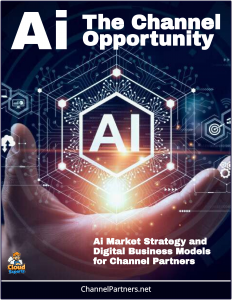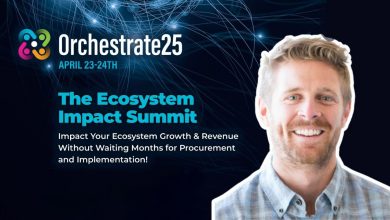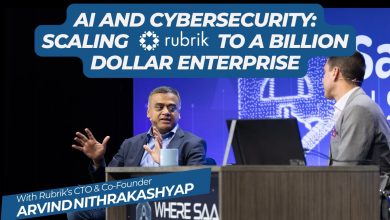Amazon’s AI Roadmap With AWS CEO Matt Garman
Every aspect of Amazon is leveraging artificial intelligence, says Matt Garman, CEO of Amazon Web Services.
 Matt Garman, CEO of Amazon Web Services (AWS), has outlined a strategic roadmap for Amazon’s AI initiatives that emphasizes integration, flexibility, security, and cost-efficiency, with a focus on enabling customers to leverage generative AI effectively.
Matt Garman, CEO of Amazon Web Services (AWS), has outlined a strategic roadmap for Amazon’s AI initiatives that emphasizes integration, flexibility, security, and cost-efficiency, with a focus on enabling customers to leverage generative AI effectively.
Garman views AI, particularly generative AI, as a foundational technology that is deeply integrated into AWS’s offerings rather than a standalone business.
He emphasizes embedding AI into customer applications to enhance efficiency, capabilities, and user experiences across industries.
This includes tools like Amazon Q, a generative AI platform for developers and businesses, and Bedrock, which provides access to foundation models from providers like Anthropic and Mistral.
AWS AI Innovations
AWS is focusing on helping customers integrate AI into their existing infrastructure, prioritizing security and data privacy to protect intellectual property. This approach aims to make AI a seamless part of enterprise workflows rather than a separate entity.
Development of Agentic AI
AWS has established a dedicated Agentic AI group to develop autonomous AI agents that can operate without constant user prompts. Garman sees this as a potential “next multi-billion-dollar business” for AWS, indicating a significant investment in AI that can independently perform tasks, enhancing automation for enterprises.
Custom Silicon and Compute Power
To address the high costs of AI, AWS is investing in custom silicon, such as the Trainium2 AI accelerators. Garman announced the development of an ultra-cluster supercomputer with Anthropic, comprising “several hundred thousand” Trainium2 chips, providing five times the compute power of previous model training runs. This aims to reduce costs and improve performance for AI training and inference.
AWS’s focus on silicon innovation, alongside software and algorithmic advancements, is intended to make AI more accessible and cost-effective for customers.
Support for Diverse AI Models
AWS’s strategy avoids locking customers into a single proprietary AI model. Instead, it offers a platform (Bedrock) that supports a variety of models, both open and proprietary, allowing customers to choose the best fit for their needs. Garman has emphasized this “any model you want” approach, which contrasts with competitors like Microsoft and Google, who focus on proprietary AI ecosystems.
This flexibility enables customers to chain different models together, tailoring solutions to specific use cases while prioritizing data security and performance.
Focus on Startups and Enterprises
Garman has highlighted the importance of startups, noting that 96% of “tier one” generative AI startups are built on or use AWS infrastructure. The AWS Generative AI Accelerator program supports early-stage startups, fostering innovation and filling gaps in AWS’s offerings through partnerships with companies like Scale AI and Cohere.
For enterprises, AWS is shifting focus from proof-of-concept AI projects to production-ready solutions, addressing challenges like cost optimization, security guardrails, and scalable integration.
AI-Driven Innovation Across Industries
Garman sees generative AI as a transformative force across all industries, enabling applications like molecule and protein creation for healthcare innovations, such as potential cancer cures. AWS is positioning itself to support these advancements by providing robust compute, storage, and analytics capabilities.
The AWS Generative AI Innovation Center collaborates with customers to identify and implement AI opportunities, further embedding AI into practical business solutions.
Sustainability and Infrastructure Expansion
To support the energy demands of AI, AWS is investing in sustainable infrastructure, including an $11 billion expansion of data centers in Georgia and exploring nuclear power investments. This ensures the scalability and environmental responsibility of AI workloads.
AWS’s partnership with Saudi Arabia’s HUMAIN involves a $5 billion investment to accelerate AI adoption, reflecting a global approach to AI infrastructure.
Workforce and Cultural Shifts
Garman has suggested that AI will reshape developer roles, predicting that within two years, most developers may not be coding manually due to AI automation. He encourages developers to focus on innovation and product management, leveraging tools like Amazon Q to enhance productivity.
To foster innovation, Garman supports Amazon’s return-to-office mandate, believing in-person collaboration drives faster decision-making and creativity, which is critical for AI development.
Continuous Innovation Without a Finish Line
Garman describes AI as a “race without a finish line,” emphasizing that AWS will continuously evolve its AI offerings. At the re:Invent conference in December 2024, AWS announced new foundation AI models (Nova), signaling ongoing investment in cutting-edge AI technologies.
Critical Perspective
While Garman’s roadmap is ambitious, it’s worth noting that AWS has faced criticism for lagging behind competitors like Microsoft Azure and Google Cloud in the generative AI race, particularly after the rapid rise of OpenAI’s ChatGPT.
AWS’s deliberate approach—focusing on a secure, flexible platform rather than rushing to deploy consumer-facing chatbots—may mitigate short-term perceptions of falling behind but requires sustained execution to maintain market leadership.
Additionally, the heavy reliance on partnerships like Anthropic and the lack of a dominant proprietary model (e.g., Titan is less competitive than OpenAI’s or Google’s models) could pose risks if competitors’ ecosystems gain more traction. Garman’s focus on cost optimization and custom silicon is pragmatic, but the success of these initiatives depends on AWS’s ability to deliver measurable ROI for customers amidst rising AI infrastructure costs.



